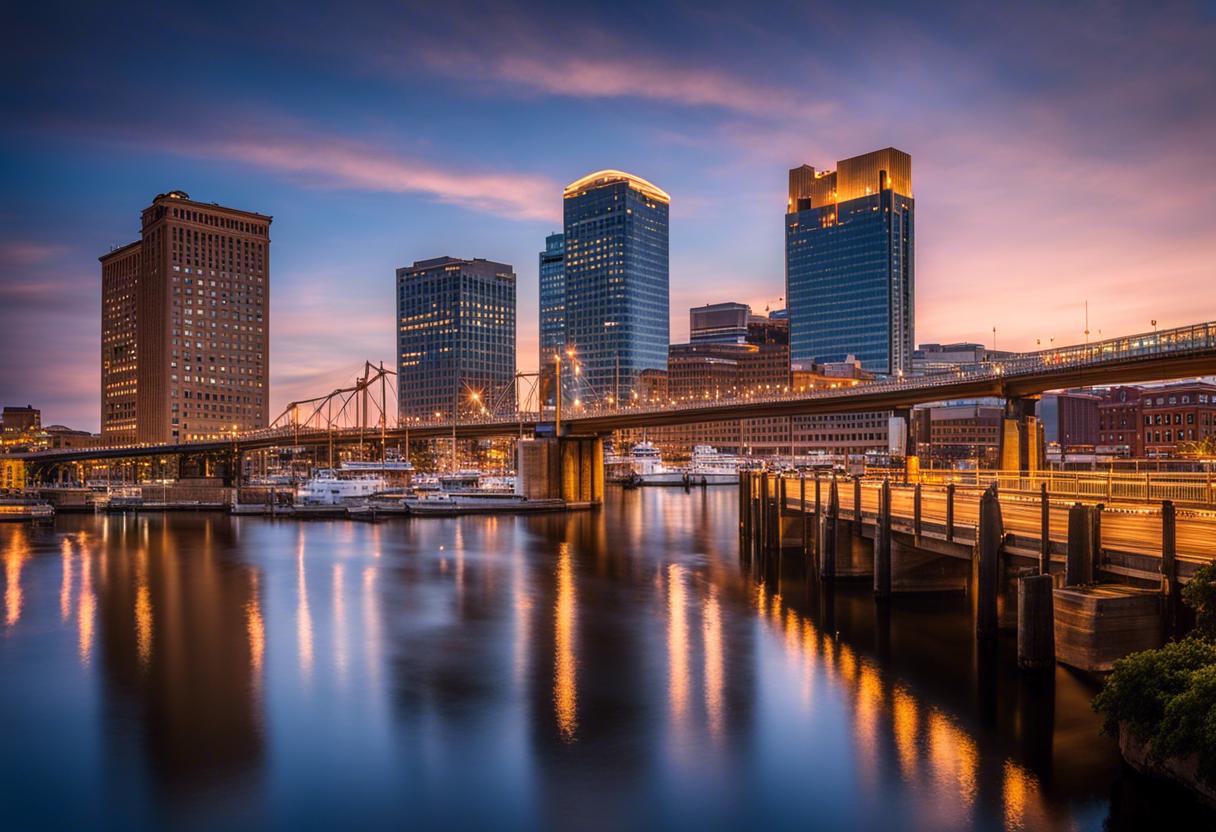Authorities have declared that those lost in the catastrophic collapse of the Baltimore bridge are likely deceased, shifting rescue efforts to recovery activities. Six individuals are missing after a cargo ship impacted a 2.5km bridge in Baltimore Harbor, Maryland, resulting in its downfall into the river beneath.
The vicinity of the collapsed Francis Scott Key Bridge has been scoured by search divers since the structure was brought down by the collision on Tuesday. After 18 hours, however, the rescue operation was halted Tuesday night as the chances of finding the workers alive waned.
Quoting Rear Admiral Shannon Gilreath of the U.S. Coast Guard at a briefing, she stated, “We do not believe we will discover any survivors among those missing.” Officials from the Coast Guard and the Maryland State Police further explained that conditions were too challenging to continue the search overnight due to poor visibility and hazardous currents among the debris-filled waters.
Addressing speculations of possible foul play, Maryland’s governor Wes Moore denied any credible suggestion pointing towards terrorist activities. He lamented the calamitous loss of the Francis Scott Key Bridge, which served as a critical connection within Baltimore’s port infrastructure.
The tragedy unfolded in the early hours of Tuesday when the ship hit one of the two crucial support pillars of the bridge. At the time, a construction crew of six people was operating on the bridge. They remain missing, while two others were saved shortly after the incident.
Speaking near the scene, Governor Moore admitted the sight of the collapsed bridge was unnerving. The Key Bridge, typically traversed by approximately 30,000 Maryland residents daily, is a familiar fixture for many. It was an unprecedented event in a location that seemed routine to so many users.
Hearing that the Key Bridge has collapsed is a jarring and distressing experience. One cannot help but think of the potential human casualties involved. For Marylanders particularly, who have lived with the fixture of the Key Bridge for the last 47 years, it is simply soul-crushing. We’re confronted with a heart-wrenching scene today, something truly without precedent.
The container ship, Dali, that measured 289m was barely into its 27-day journey towards Colombo, Sri Lanka when disaster struck in the very beginning, causing it to malfunction and approach the bridge. The ship was chartered by the Danish shipping mogul, Maersk, whose staff expressed shock and terror at the incident. Interestingly, no Maersk employees found themselves aboard the ship.
A distress signal from the ship’s pilots, speaking of lost propulsion and the possible danger of hitting the bridge, gave officials sufficient time to halt the traffic at the overpass on both sides, before the disaster occurred. Miraculously, the ship’s crew suffered no injuries, remaining on-board while rescue missions unfolded and an investigation was put into motion.
Speculations about an on-site construction crew dealing with the bridge’s structural issues at the time of the incident were refuted by Maryland’s Secretary of Transportation, Paul Wiedefeld. He clarified that the crew was merely fixing potholes. When questioned about the possibility of people in vehicles ending up in the water, Mr Wiedefeld expressed disbelief. Although The Baltimore Sun reported a minimum of seven vehicles ending up in the Patapcso river, it remained uncertain whether they were occupied.
President Joe Biden, in his speech delivered prior to his North Carolina visit, honoured the families impacted by this horrific incident. Acknowledging the horrors of such an event, he extended a promise to deploy all necessary federal support. Being a regular commuter over the bridge himself, this incident resonates with him deeply.
UK transportation secretary Pete Buttigieg has promised to utilise all possible federal resources to aid the recovery efforts following a devastating incident at Baltimore’s port, currently believed to be the result of a terrible accident not a deliberate act. Buttigieg, who personally went to the scene of the disaster, has vowed that emergency funds will be made promptly available to address the civic damage that Baltimore and Maryland will be dealing with for years.
The destruction of the bridge caused significant disruptions in transportation, and locals were told to avoid the nearby roads. The alternative routes around the Baltimore area were congested as commuters sought to navigate them. Ship traffic also came to an abrupt halt at the Baltimore port, known as one of the busiest ports in the country, with nine vessels left waiting in the Chesapeake Bay, outlying the city harbour on Tuesday.
The US National Transportation Safety Board (NTSB) have launched an investigation into the incident and had engineers on site by Tuesday. Similar to an accident in Guangzhou port, southern China the previous month, this catastrophic incident has led to comparisons where a ship compromised the support of a two-lane bridge leading to vehicles plunging into the water and five reported deaths.
Upon the shocking realisation of the overnight ordeal in Baltimore, queries have arisen about the potential need for added support to the bridge pillars, to better manage the impact from the increasing size of the cargo ships that regularly enter and exit the harbour. The supporting structure of the Baltimore bridge, built in the 1970s, could potentially have been insufficient for The Dali, suspected to have been travelling at eight knots at the time of the collision.
The secretary declined to comment on whether the bridge’s collapse was an inevitable outcome from the moment of impact. As the investigation is still underway, he stated, “We are still in the process of figuring out exactly what transpired, so we are not able to share further details about whether it was unavoidable. The bridge was fully compliant with regulations; hence we lack any more information on the incident. We don’t currently have projected timelines. Our immediate and sole aim is rescue and recovery.”

